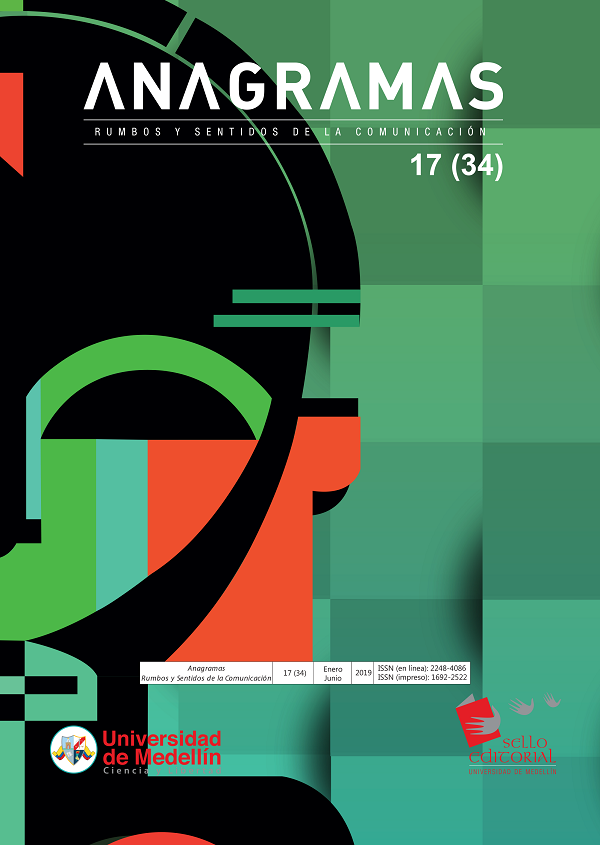Olfactory associations around space perception and the service received by members of a fund of employees in Manizales
Main Article Content
Abstract
This paper shows the results obtained in a research on sensory marketing and its influence on the shopping experience, which seeks to contribute knowledge to the sensory marketing field and its importance in making memorable experiences for the public. In this way it is intended to understand if a particular scent can be related to the experience of the service received in the facilities of fund of employees in Manizales through a quantitative-descriptive research with a quasi-experimental correlational scope.
In the first week, 301 people who entered the facilities of the fund of employees without any scent scheme were interviewed. In the second week, an intervention was made: 301 surveys were collected from people who entered the same facilities, but this time with a scent scheme, and who rated the same variables.
Surveys were systematized in a Microsoft Excel 2013® spreadsheet, and the statistical analysis was carried out with the IBM SPSS v. 2.1. software. Internal consistency was verified with Cronbach’s alpha of 0.856. Also, the population was characterized, and ordinal associations were established by the Gamma coefficient of Goodman and Kruskal. In addition, the possible associations were verified with a Chi-square test. One of the most important results of the study showed that smell stimulation can be linked in a positive way in the perception of the attention variables regarding service and cleaning.
Article Details
References
Alcántara, E., Artacho, M., Zamora, T. y Martínez, N. (2014). Exploratory Study of the Influence of the Sensory Channel in Perception of Environments. Journal of Sensory Studies, 29(4), 258-271. doi:10.1111/joss.12099
Alfaro, E. (2012). El ABC del shopping experience. Cómo generar experiencias para vender más. Madrid: Wolters Kluwer.
Bouzas, D. G., Barrie, C. A., & Serra, T. (2011). Marketing olfatorio: el olor de los deseos. Harvard Deusto Marketing y Ventas, (103), 34-39.
Bonadeo, M. (2005). Odotipo: historia natural del olfato y su función en la identidad de marca (Tesis doctoral). Universidad Austral, Buenos Aires, Argentina.
Canniford, R., Riach, K. y Hill, T. (2017). Nosenography: How smell constitutes meaning, identity and temporal experience in spatial assemblages. Sage Journals, 18(2), 234-248. doi: 10.1177/1470593117732462
Chebat, C. y Michon, R. (2003). Impact of ambient odors on mall shoppers’ emotions, cognition, and spending: A test of competitive causal theories. Journal of Business Research, 56(7), 529-539. doi:10.1016/S01482963(01)00247-8
Derval, D. (2010). The Right Sensory Mix. Berlín: Springer-Verlag.
Fiore, A., Yah, X. y Yoh, E. (2000). Effects of a product display and environmental fragrancing on approach responses and pleasurable experiences. Psychology y Marketing, 17(1), 27-54. doi.org/10.1002/(SICI)1520-6793(200001)17:1<27::AID-MAR3>3.0.CO;2-C
Goldkuhl, L. y Styvén, M. (2007). Sensing the scent of service success. European Journal of Marketing, 41(11-12), 1297-1305. doi:10.1108/ 03090560710821189
Haase, J., Wiedmann, K. y Bettels, J. (2018). Sensory imagery in advertising: How the senses affect perceived product design and consumer attitude. Journal of Marketing Communications, 15(1), 2-3. doi:10.1080/13527266.2018.1518257
Hirsch, A. (1995). Effects of ambient odors on slot-machine usage in a Las Vegas Casino. Psychology and Marketing, 12, 585-594. doi: 10.1002/ mar.4220120703
Hulten, B. (2015). Marketing sensorial: el concepto de experiencia de marca multisensorial. European Business Review, 23(3), 256-273. doi.org/10.1108/09555341111130245
Ianinni, M. (2010). Marketing Olfativo un valor diferencial. MK: Marketing + ventas, 253(2010), 58-64.
Kivioja, K. (2017). Impact of point-of-purchase olfactory cues on purchase behavior. Journal of Consumer Marketing, 34(2), 119-131. doi:10.1108/JCM-08-2015-1506
Krishna, A. (2012). An integrative review of sensory marketing: Engaging the senses to affect perception, judgment and behavior. Journal of Consumer Psychology, 22, 33-351. doi: 10.1016/j.jcps.2011.08.003
Krishna A., Cian, L. y Aydınoğlu, N. (2017). Sensory Aspects of Package Design. Journal of Retailing, 93(1), 43-54. doi.org/10.1016/j.jretai.2016.12.002
Labenz, F., Wiedmann, K. P., Bettels, J., & Haase, J. (2018). Sensory Stimuli in Print Advertisement Analyzing the Effects on Selected Performance Indicators. Journal of International Business Research and Marketing, 3(2), 7-15.
Lehrner, J., Marwinski, G., Lehr, S., Johren, P. y Deecke, L. (2005). Ambient odors of orange and lavender reduce anxiety and improve mood in a dental office. Physiology and Behavior, 86(1-2), 92-95. doi: 10.1016/j.physbeh.2005.06.031
Lindstrom, M. (2009). Compradicción. Verdades y mentiras de por qué las personas compran. Bogotá: Norma, 248p.
Liljenquist, K., Zhong, C. y Galinsky, A. (2010). The smell of virtue. Clean scents promote reciprocity and charity. Psychological Science, 21, 381-383. doi:10.1177/0956797610361426
Manzano, R., Gavilán, D. Avello, M., Abril, C. y Serra, T. (2011). Marketing sensorial: comunicar con los sentidos en el punto de venta. Madrid: Prentice Hall.
Palomares, R. (2013). Marketing en el punto de venta: comunicación y promoción. Madrid: ESIC.
Piqueras-Fiszman, B. y Spence C. (2012). The Influence of the Feel of Product Packaging on the Perception of the Oral-somatosensory Texture of Food. Journal of Food Quality and Preference, 26(1), 67–73. doi:10.1016/j.foodqual.2012.04.002
Rimkute, J., Moraes, C. y Ferreira, C. (2016). The effects of scent on consumer behaviour. International Journal of Consumer Studies, 40(1), 24-34. doi:10.1111/ijcs.12206
Rupini, R.V. y Nandagopal, R. (2015). A Study on the Influence of Senses and the Effectiveness of Sensory Branding. Journal of Psychiatry, 18(2) 236. doi:10.4172/Psychiatry.1000236
Sánchez, J. y Pintado, T. (2012). Nuevas tendencias en comunicación. Madrid: ESIC.
Schifferstein, H. y Blok, S. (2002). The signal function of thematically (in) congruent ambient scents in a retail environment. Chemical Senses, 27(6), 539-549. Doi:10.1093/chemse/27.6.539
Schmitt, B. (2007) Experiential Marketing. Barcelona: Deusto.
Spence, C., Puccinelli N., Grewal D. y Roggeveen, A. (2014). Store Atmospherics: A Multisensory Perspective. Journal of Psychology and Marketing, 31(7), 472-488. doi: 10.1002/mar.20709





